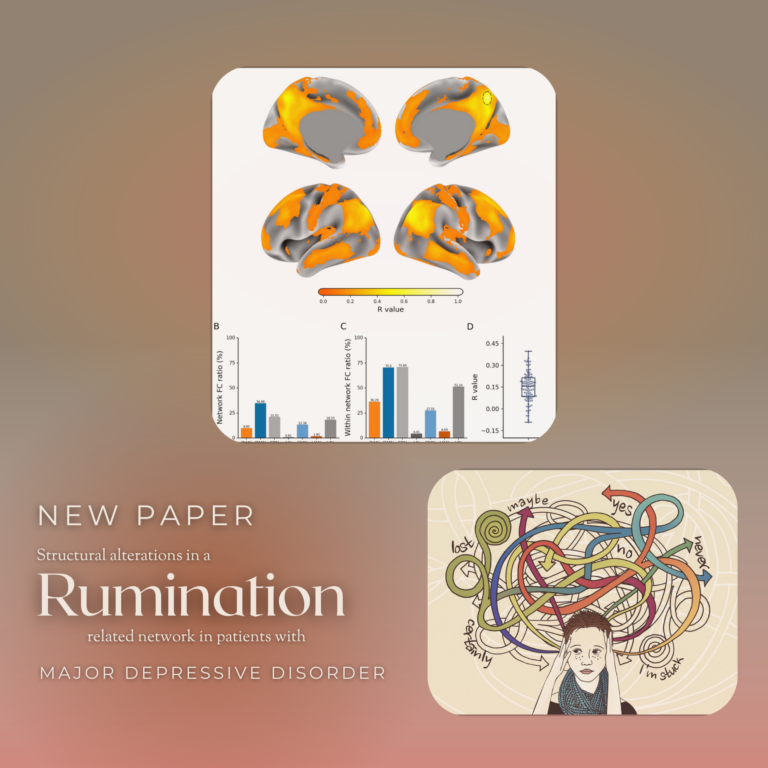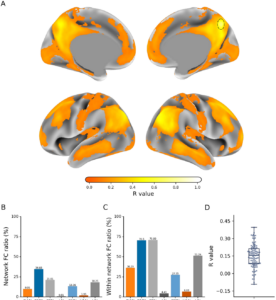
[2024.11.30]
GIMBC is proud to highlight PhD student Paul Z. Cheng’s recent publication in Psychiatry Research: Neuroimaging: “Structural alterations in a rumination-related network in patients with major depressive disorder.”
Many people experience negative memories replaying in their minds. This repetitive negative thinking, known as rumination, is a common symptom of depression, though the underlying causes are not fully understood. To investigate rumination in depression, we compared brain scans of individuals with and without depression, examining grey matter volume (the tissue comprising neurons) and its relationship to self-reported rumination levels. We found that while grey matter was thicker in part of the frontal cortex in people with depression, this difference was not related to their rumination. Instead, rumination correlated with grey matter volume in a region at the back of the brain. Importantly, this region is connected to networks involved in memory and task-switching, and also connects to the frontal area showing grey matter alterations in depression. These findings suggest that rumination may stem from structural brain changes that affect communication between different brain regions. This “network effect” could shift thought patterns, leading individuals to focus on negative memories rather than the present. These preliminary results are based on a small sample of primarily older individuals with long-term depression who were taking medication. Further research is needed to confirm these findings.
We encourage you to explore this publication and learn more about the exciting research happening at GIMBC.
Cheng, P.Z., Lee, H.-C., Lane, T.J., Hsu, T.-Y., Duncan, N.W., 2024. Structural alterations in a rumination-related network in patients with major depressive disorder. Psychiatry Research: Neuroimaging 111911. https://doi.org/10.1016/j.pscychresns.2024.111911




